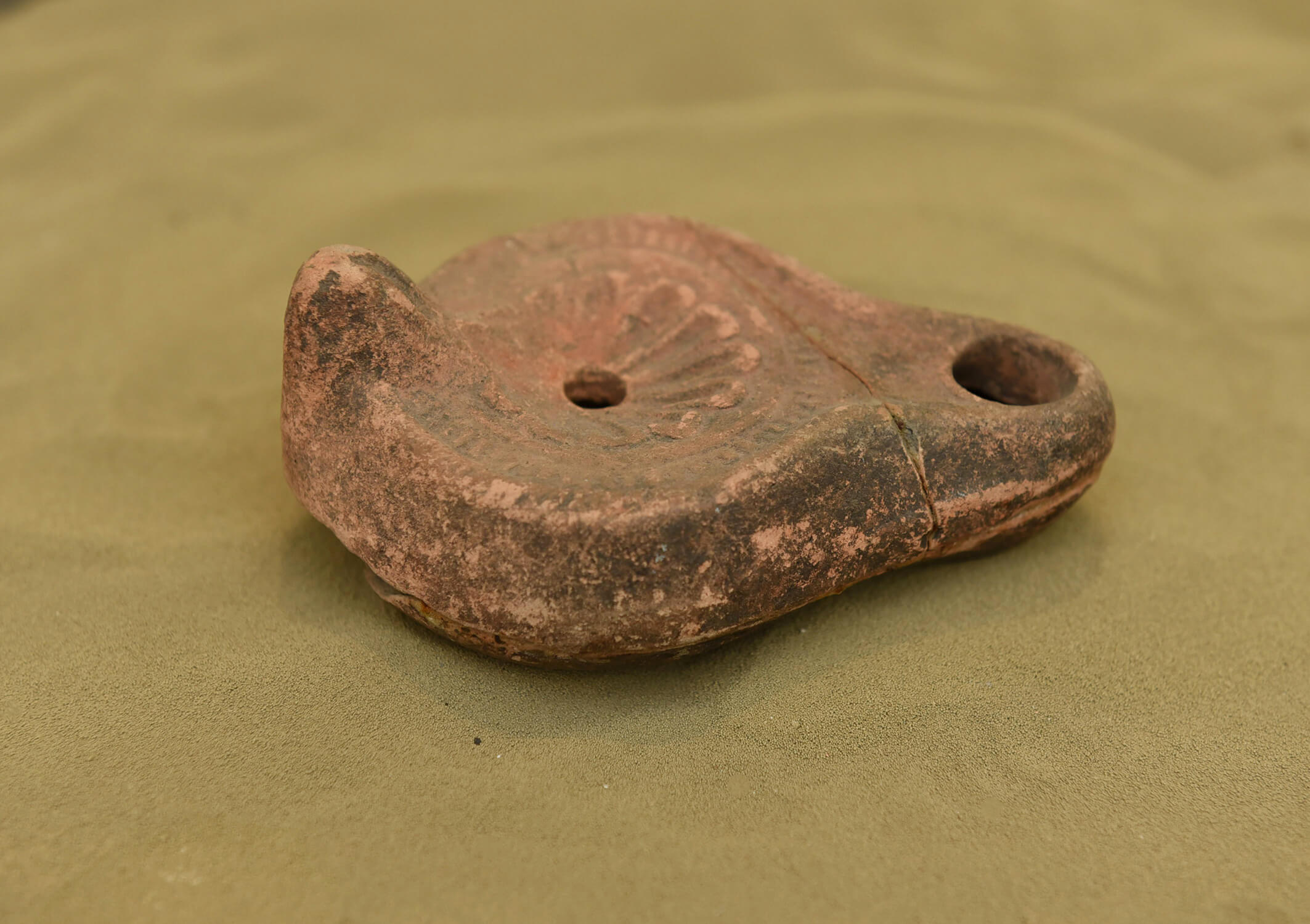
Lanterns (oil lamps), chance finds, 2nd-3rd century

Portrait of a young woman, Bronzani Majdan, 3rd century
Permanent Exhibition - Classical Antiquity
The Classical Antiquity Collection comprises jewelry, coins, glass and ceramic items, lamps (oil lamps), toilet accessories, and stone sculpture (tombstones and votive monuments). Most of these items were discovered during archaeological excavations at Kastel, Hanište, Bronzani Majdan, and Glamoč, with a smaller portion found at Grič-Pauša in Ramići, while others were discovered by chance. The Romans finally brought these regions under their control after the Bato's Uprising between 6 and 9 AD. The natural resources made this part of the Balkans attractive to the Romans, who showed particular interest in the Banja Luka area, establishing a new center along the path of their territorial and economic expansion. Regarding the Roman settlement near Banja Luka, it gradually expanded, acquiring the status and privileges of a municipium. Merchants and the regular army escort are considered the founders of the settlement (Castra) in Banja Luka. In addition to merchants, during the second half of the 2nd century, retired soldiers settled around the camp (castrum), participating in the construction of a civilian settlement. The castrum extended towards the Vrbas River, encompassing the area of the Kastel fortress (castrae, legionis), as evidenced by the discovery of buildings and the remains of a small temple identified as a shrine dedicated to Jupiter. Jewelry, aside from its purely aesthetic value, is also an essential part of clothing and held symbolic significance on a social and personal level, as well as in military, family, and religious contexts. The fibula had a distinctly functional purpose in dressing, as it was used to fasten garments, typically at the right shoulder. As part of everyday attire, fibulae were often depicted on reliefs, mosaics, frescoes, and other monuments. Roman fibulae were most commonly made of bronze, and to a lesser extent, of silver, gold, and bone. Roman ceramics from Kastel and Hanište are characterized by a large number of specimens, fewer forms, and solid craftsmanship. These items were produced in three ways: freehand, on a potter's wheel, and in molds. The repertoire of glass vessels from our region is primarily associated with the everyday use of the local population. At the end of the 1st century, forms from Syria began to appear, and during the first half of the 2nd century and towards the end of the 3rd century, forms from the Rhine region were present. The Dalmatian road network remained significant in the following centuries, especially during the wars for Dacia and Moesia, and notably for the defense of the limes along the Danube. Therefore, it is understandable that in the 3rd and 4th centuries, a large number of milestones have been preserved, testifying to the Empire’s increased interest in the roads in Dalmatia and beyond. A fragment of a sarcophagus from the Classical Antiquity collection of the Museum of the Republic of Srpska, similar to an analogous example from Glamoč, indicates - due to the prevalence of medallions and the method of manufacture - that these sepulchral monuments likely originated from a stone-cutting workshop that may have operated in the border region of Delmata and between the Pannonian territories.
- CONSULTANT
